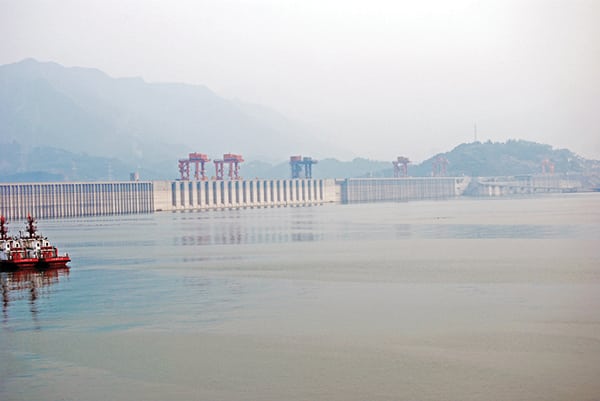Are Large Dams Unviable?
After a lull that spanned nearly two decades, a hoard of new massive hydropower projects are being developed around the world. Some, like the 11.2-GW Belo Monte dam in Brazil, the 4.5-GW Diamer-Bhasha project in Pakistan, the Jinsha River dams in China, the 6-GW Myitsone dam in Myanmar, and the 1.8-GW Gilgel Gibe III dam in Ethiopia are controversial for their supposed environmental and social impacts, but they are also unprecedented in scale and cost. Nonetheless, according to researchers from the University of Oxford, in the vast majority of cases such large dams are not economically viable, and policymakers in developing countries should instead seek out more prudent alternatives that can be built over shorter time horizons.
Basing their data on 245 large dams in 65 different countries, Professor Bent Flyvbjerg of the University of Oxford’s Said Business School and Dr. Atif Ansar, lecturer at the University of Oxford’s Blavatnik School of Government, posit in a recent study published in the journal Energy Policy that three out of every four large dams suffer a cost overrun in constant local currency terms and that the construction costs of large dams are on average 96% higher than original budgets.
“By the same token, forecasts of costs of large dams today are likely to be as wrong as they were between 1934 and 2007,” they say. The researchers suggest that the Itaipu Dam, which straddles a border and provides 72% of Paraguay’s power and 17% of Brazil’s, suffered a 240% cost overrun. China (Figure 1), Indonesia, Pakistan, and other nations show similar “amnesic” behavior regarding the building of dams, they say.
At the same time, an overwhelming eight of 10 large dams also suffered schedule overruns, the study shows. Large dams take an average of 8.2 years to build—and often extend more than 10 years. The researchers concluded that these long time horizons leave dam projects particularly ineffective in resolving urgent energy crises and are especially vulnerable to currency volatility, hyperinflation, political tensions, and swings in water availability and electricity prices. “The systematically poor outcomes of large dams suggest that ‘fools’ and ‘liars’ have been at the helm,” said Professor Flyvbjerg in a statement.
But for the International Hydropower Association (IHA), which rebutted a number of claims made by the authors, the question that should be asked is: “Is the project a good investment?” not “Does the project overrun?” When all things are considered, “hydropower can make a powerful case as a long-term investment, by delivering sustainable energy and water services for multiple generations. Unfortunately, the report’s authors seem to have completely ignored the multiple benefits of hydropower, and so [present] an unbalanced picture of the economic value versus the investment risks,” says the group, whose “platinum” members include companies that build mega-dams, among them, China Power Investment Corp., China Three Gorges Corp., Itaipu Binacional, RusHydro, and SinHydro.
Only about 20% of the world’s dams actually have any hydropower associated with their reservoirs and yet hydropower produces 76% of the world’s renewable power according to the IHA. “It is unaffected by volatile and rising fuel prices, which can have dramatic impacts on the viability of fossil power technologies, not to mention the avoided pollution.” The organization admits that hydropower projects do have high upfront outlays during the construction phase, but also “very low running costs and [they] operate for many decades.” Not to mention, modern hydropower operating efficiencies can reach 95% and “turbine availability for operation can exceed this percentage,” it says. “This is unmatched by any other source of power generation.”
On the whole, the world’s largest hydropower projects are worth their while, the IHA concludes. Itaipu indeed saw a cost overrun during construction, but “all debts will be paid by 2023 according to the 1973 binational Treaty that created the project,” it says. The primary purpose of the Three Gorges dam in China is for flood control—not power generation—and since the project was commissioned in 2007 (one year ahead of schedule and RMB30 billion under budget), it has significantly attenuated peak flow and averted economic impacts from floods, as well as increased navigation by more than four times.
Because the technology is reliable, the scale is considerable, and the resulting power prices are economical and predictable, “At a time when energy and water services are at the forefront of policy agendas around the world, hydropower is an investment that makes a lot of sense,” the IHA says.
